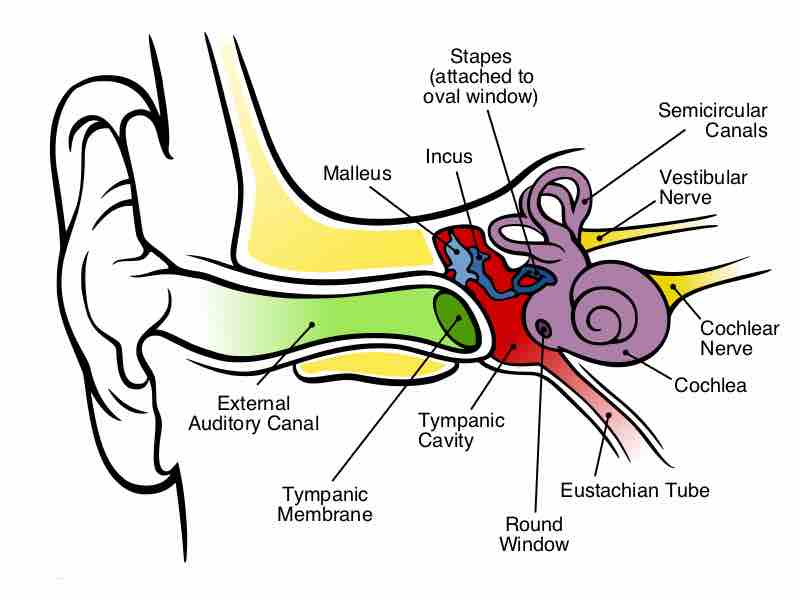Sound waves are vibrations in the air. The ear is the sensory organ that picks up sound waves from the surrounding air and turns them into nerve impulses, which are then sent to the brain. The sound waves carry a lot of information -- language, music, and noise -- all mixed together. The task of the ear is to turn the signals in these waves of bouncing air molecules into electrical nerve signals while keeping as much of the information in the signal as possible. (It's the brain's job to then sort the signals and make sense of them. ) It's not easy to turn one kind of signal into another without losing information, but the ear is well designed for the task.

Anatomy of the Human Ear
Anatomy of the human ear; the length of the auditory canal is exaggerated for viewing purposes
Air surrounds the head and fills the ear canal and middle ear. Therefore, when the outer part of the ear collects sound and the middle ear amplifies this sound pressure, these processes occur in the medium of air. However, the hollow channels of the inner ear (which is embedded in the temporal bone, the densest bone of the body) are filled with liquid. So as the sound travels into the inner ear, it passes from the medium of air into a liquid medium. These inner-ear channels contain a sensory epithelium that is studded with hair cells. The microscopic "hairs" are structural protein filaments that project out into the fluid. The hair cells release a chemical neurotransmitter when stimulated. Sound waves moving through fluid push the filaments; if the filaments bend over enough, the hair cells fire chemical signals. In this way sound waves are transformed into nerve impulses. The nerve impulses travel from the left and right ears through the eighth cranial nerve to both sides of the brain stem and up to the part of the cerebral cortex dedicated to sound (auditory cortex, located in the temporal lobe).